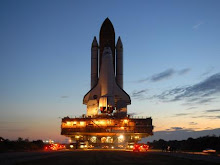
Increasing ozone near the Earth's surface could lead to significant reductions in regional plant production and crop yields.
Scientists from three leading UK research institutes have just released new findings that could have major implications for food production and global warming in the 21st century.
Experts from the Met Office, the University of Exeter and the Centre for Ecology & Hydrology, have found that projections of increasing ozone near the Earth's surface could lead to significant reductions in regional plant production and crop yields. Surface ozone also damages plants, affecting their ability to soak up carbon dioxide from the atmosphere and accelerating global warming.
Near-surface ozone has doubled since 1850 due to chemical emissions from vehicles, industrial processes, and the burning of forests. Dr Stephen Sitch, a climate impacts scientist at the Met Office Hadley Centre and lead author of the article, said: "Climate models have largely ignored atmospheric chemistry but in this research we have identified a cause of potentially increased warming with elevated levels of surface ozone likely to suppress plant growth."
Plants and soil are currently slowing--down global warming by storing about a quarter of human carbon dioxide emissions, but the new study suggests that this could be undermined by further increases in near-surface ozone. As a result more carbon dioxide would accumulate in the atmosphere and add to global warming. Co-author, Professor Peter Cox of the University of Exeter, explains: "We estimate that ozone effects on plants could double the importance of ozone increases in the lower atmosphere as a driver of climate change, so policies to limit increases in near-surface ozone must be seen as an even higher priority."
The research is published online in Nature July 25, 2007
Near-surface ozone has doubled since 1850 due to chemical emissions from vehicles, industrial processes, and the burning of forests. Dr Stephen Sitch, a climate impacts scientist at the Met Office Hadley Centre and lead author of the article, said: "Climate models have largely ignored atmospheric chemistry but in this research we have identified a cause of potentially increased warming with elevated levels of surface ozone likely to suppress plant growth."
Plants and soil are currently slowing--down global warming by storing about a quarter of human carbon dioxide emissions, but the new study suggests that this could be undermined by further increases in near-surface ozone. As a result more carbon dioxide would accumulate in the atmosphere and add to global warming. Co-author, Professor Peter Cox of the University of Exeter, explains: "We estimate that ozone effects on plants could double the importance of ozone increases in the lower atmosphere as a driver of climate change, so policies to limit increases in near-surface ozone must be seen as an even higher priority."
The research is published online in Nature July 25, 2007




